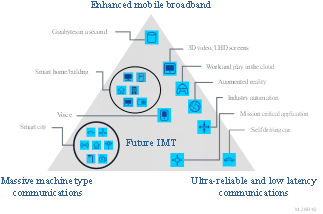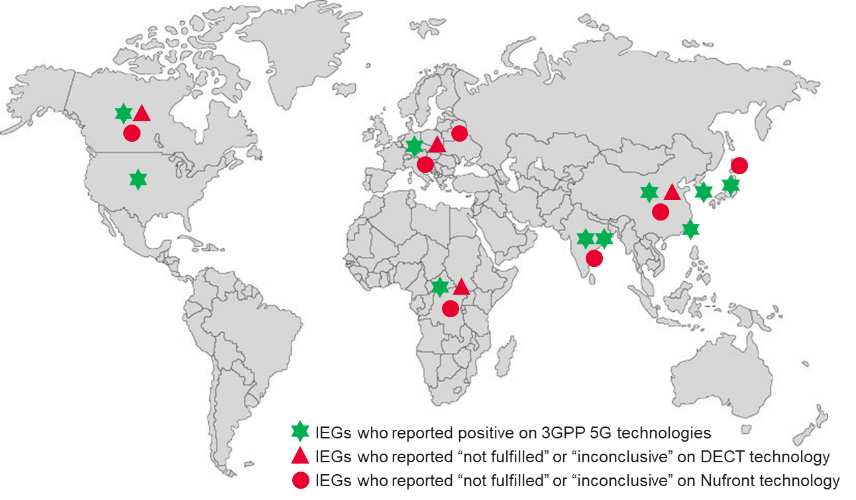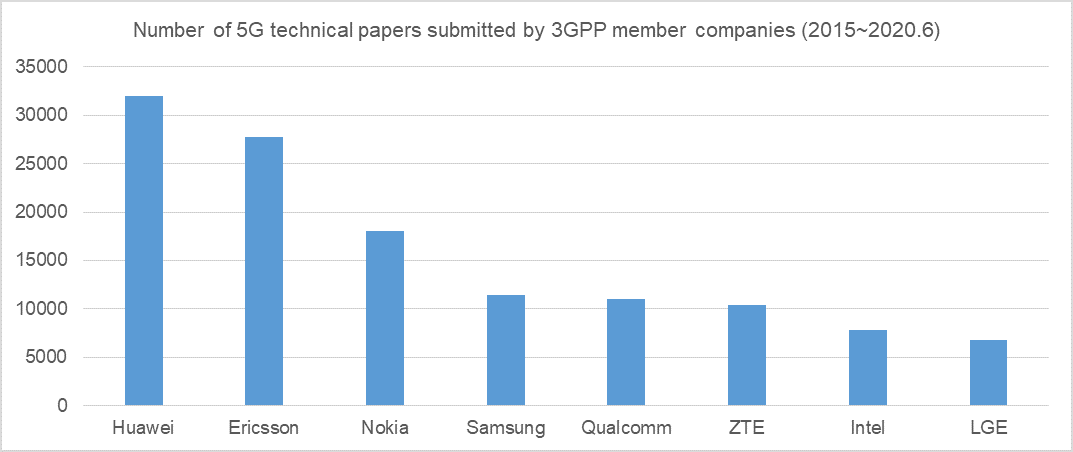Table of Contents
Introduction
In recent decades, mobile communications have completely transformed the way that human beings communicate and interact with one another. New technology generations introduced on average every ten years have consistently and fundamentally improved the overall user experience, paving the way for innovation beyond anyone’s wildest imagination. While the success and progress with wireless technologies can be attributed to a wide range of factors, the International Mobile Telecommunications (IMT) standards set by the International Telecommunication Union (ITU) have been an important fabric tying together various mobile broadband systems, coalescing the industry and ecosystem under a common set of platforms. In each generation, unified IMT technology has enabled global harmonization and wide industry support resulting in worldwide compatibility, international roaming, and economies of scale.
The Role of ITU-R
ITU is the United Nations specialized agency for information and communication technologies (ICTs), fostering innovation among 193 member states. For more than 150 years, ITU has been coordinating the radio spectrum, establishing standards that foster connectivity globally across multiple technology systems. And for the past 30 years, the ITU Radiocommunication sector (ITU-R) has been coordinating efforts with governments and industries to develop unified global broadband multimedia international mobile telecommunications systems, also known as IMT.
ITU-R plays an important role in achieving the objective of global harmonization and wide industry support for each generation of mobile communication technologies. 2G in the 1990s was the first generation of digital mobile communication system. These technologies provided dramatically enhanced capabilities relative to previous analog technologies, beginning the ongoing prevalence of mobile communication in our daily life. Despite the success of 2G during that era, the fragmented technology standards were incompatible for purposes of global roaming and economies of scale.
Global operation and economies of scale are key requirements for the success of mobile telecommunication systems. In order to achieve this goal, ITU-R established the concept of IMT, which includes a harmonized timeframe for future development, taking into account technical, operational, and spectrum-related aspects. Since then, ITU-R has been striving for harmonized global standards all through the process of IMT-2000 and IMT-Advanced. Today, with the global consensus on 3GPP 5G technologies as IMT-2020 standards, we are very close to reaching that goal.

Figure 1. ITU-R progress toward the global harmonization of IMT technologies
The ITU-R IMT-2020 Submission and Evaluation Process
In ITU-R, Working Party 5D (WP5D) is responsible for the overall radio system aspects of International Mobile Telecommunications (IMT) systems, comprising the IMT-2000, IMT-Advanced and IMT-2020 and beyond. To ensure the success of IMT-2020, WP5D defined a sophisticated process from the very beginning of the study of trends until the completion of standards works. As shown in Figure 2 below, the process includes five stages of vision, requirements and evaluation criteria, evaluation and consensus building, specification, and final approval of the ITU-R IMT-2020 specifications. Many ITU-R resolutions, recommendations, and reports have been developed to document this process.
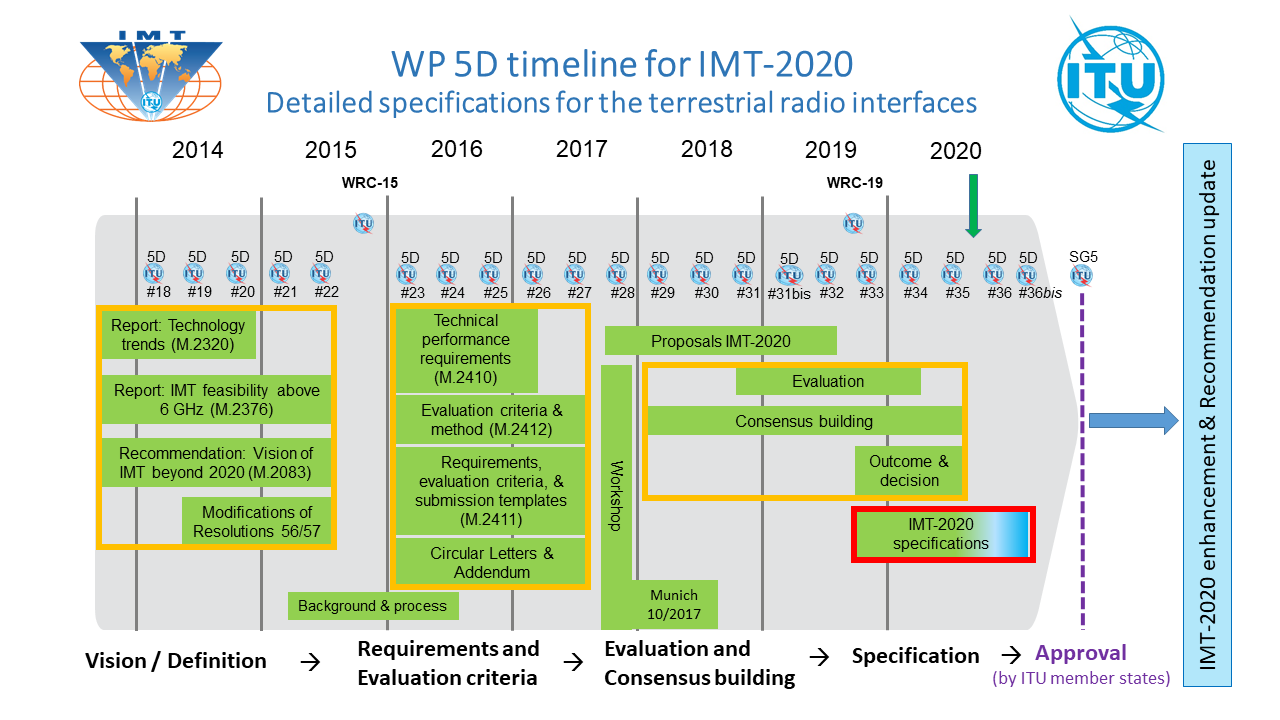
Started in 2012, ITU-R Recommendation M.2083 (IMT Vision, “Framework and overall objectives of the future development of IMT for 2020 and beyond”) provides a framework and overall objectives of the future developments of IMT for 2020 and beyond. This recommendation covers a broad range of capabilities associated with envisaged usage scenarios. Figure 3 categorizes various use cases into three main usage scenarios for IMT-2020: enhanced mobile broadband (eMBB), massive machine-type communications (mMTC), and ultra-reliable and low-latency communications (URLLC). The enhancement of key capabilities of 5G IMT-2020 compared with 4G IMT-Advanced is shown in Figure 4. These scenarios and capabilities establish direction and technical guidance for the ensuing development of IMT-2020 technologies.
Figure 3. Usage scenarios of IMT for 2020 and beyond [2](From ITU-R Recommendation M.2083)
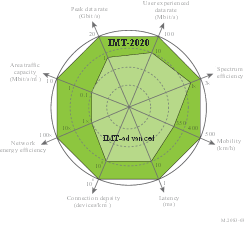 Figure 4. Enhancement of key capabilities from IMT-Advanced to IMT-2020 [3](From ITU-R Recommendation M.2083)
Figure 4. Enhancement of key capabilities from IMT-Advanced to IMT-2020 [3](From ITU-R Recommendation M.2083)
During the evaluation and consensus-building stage, in order to evaluate the seven candidate technology submissions from their proponents [4]Candidate SRIT submission from 3GPP proponent [Doc.IMT-2020/13], Candidate RIT submission from 3GPP proponent [Doc.IMT-2020/14], Candidate RIT submission from China [Doc.IMT-2020/15], Candidate … Continue reading, 14 independent evaluation groups (IEGs) registered and contributed to the ITU-R evaluation activities of IMT-2020, as shown in Table 1. These IEGs are from all over the world and various fields/industries and academia, with their views representing the entire spectrum of the global IMT community.
| Table 1: Registered IEGs for ITU-R evaluation activities of IMT-2020 |
| Evaluation Groups |
|
According to the evaluation reports submitted by the IEGs, 3GPP 5G technologies were assessed for their fulfillment of ITU-R IMT-2020 requirements. A total of ten IEGs submitted relevant evaluation reports for 3GPP 5G technologies, all of them confirming that 3GPP 5G technologies meet the requirements for all three usage scenarios (eMBB, mMTC, and URLLC). As a result, it was agreed upon at the WP5D meeting that 3GPP 5G technologies [5]As the submissions from China [Doc.IMT-2020/15] and Korea [Doc.IMT-2020/16] are technically identical to 3GPP 5G technologies, they are grouped together with the 3GPP 5G technologies. would become ITU-R IMT-2020 specifications.
In contrast to the consensus on 3GPP 5G technologies, two other candidate technology submissions were reported by IEGs as unqualified. Of the four IEGs that provided the evaluation reports for DECT technology (IMT-2020/17(Rev 1)), all of them reported the results as “not fulfilled” or “inconclusive.” Of the eight IEGs that provided evaluation results for the submission from Nufront (IMT-2020/18(Rev 1)), seven of them reported the results as “not fulfilled” or “inconclusive.” Figure 5 below depicts the IEGs’ opinions on a world map, demonstrating that the 3GPP 5G technologies have successfully reached the ITU-R IMT goal of achieving global harmonization, with the potential for wide industry support—which has not been the case for other candidate submissions.
Figure 5. IEGs’ evaluation of ITU-R IMT-2020 candidate technology submissions
Performance of 3GPP 5G technologies
As mentioned above, ITU-R Vision recommendation M.2083 defines the framework and overall objectives for IMT-2020. In addition to this general guidance, ITU also developed a series of documents detailing a systematic process regarding performance evaluation of IMT-2020 technologies. The underlying principle is to ensure that ITU-R IMT-2020 (5G) is capable of fulfilling the increasing demands on the mobile communication system for society in 2020 and beyond.
The new demands of IMT-2020 include enhanced capabilities such as greater traffic volume, more devices with diverse service requirements, improved quality of experience (QoE), and affordability. Report ITU-R M.2410 describes key requirements related to the minimum technical performance of IMT-2020 candidate radio interface technologies. Report ITU-R M.2411 deals with the requirements, evaluation criteria, and submission templates, providing service, spectrum, and technical performance requirements. Report ITU-R M.2412 provides guidelines for the procedure, the methodology, and the criteria (technical, spectrum, and service) to be used in the evaluation. With these documents, the evaluation procedure is designed in such a way that the overall performance of the candidate RITs/SRITs is fairly and equally assessed on a technical basis, ensuring that the overall IMT-2020 objectives are met.
Aside from being systematic, the evaluation process of IMT-2020 candidate technologies is also comprehensive. The minimum technical performance requirements outlined in Report ITU-R M.2410 consist of 13 different metrics: peak data rate, peak spectral efficiency, user experienced data rate, 5th percentile user spectral efficiency, average spectral efficiency, area traffic capacity, latency, connection density, energy efficiency, reliability, mobility, mobility interruption time and bandwidth. In addition to these metrices, Report ITU-R M.2412 maps the three usage scenarios (eMBB, mMTC, and URLLC) into five test environments: Indoor Hotspot-eMBB, Dense Urban-eMBB, Rural-eMBB, Urban Macro–mMTC, and Urban Macro–URLLC. Each candidate technology needs to be evaluated according to these 13 metrics and five test environments, so as to assess compliance with regard to technical performance requirements, not to mention the requirements relating to service and spectrum aspects.
According to the results provided by IEGs, as shown below in Table 2, 3GPP 5G technologies have been proven to be not only capable of fulfilling all ITU-R requirements of IMT-2020 for all three usage scenarios (eMBB, mMTC, URLLC) but also exceeding many requirements with a significant margin under certain evaluation configurations.
Table 2: Evaluation results of 3GPP 5G technologies by IEGs [6]Sources: Documents IMT-2020/39 (Rev.1), IMT-2020/40, IMT-2020/41, IMT-2020/42, IMT-2020/44, IMT-2020/45, IMT-2020 47, IMT-2020/48, IMT-2020/49 and IMT-2020/50.
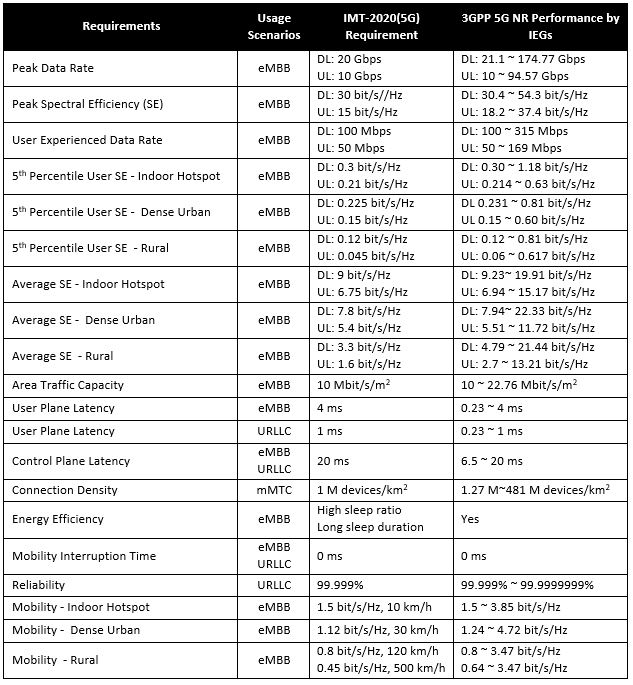
Status of 5G Commercialization
The commercialization of 3GPP 5G technologies began in 2019 and has for the most part surprised on the upside and developed at a much faster pace than previous mobile technologies from network coverage, base station deployment, and subscriber adoption perspective. The development of 3GPP 5G technologies from 2019 to 2020 has been even faster than the initial phase of LTE. 3GPP 5G RAN revenues remain on track to approach 30% to 50% of total the RAN capex in 2020. It took four years for LTE to reach the same revenue share of the overall RAN market.
More than 100 commercial 5G networks utilizing 3GPP 5G technologies had been launched by October 2020, with multiple countries already offering nationwide 3GPP 5G coverage utilizing the low-band and the upper mid-band. And according to the GSA, 5G subscriptions approached 138 M in the second quarter, boosted by robust growth in China. 5G subscriptions are projected to surpass 0.2 B in 2020.
And more importantly, the shift towards 5G SA is picking up pace, providing the essential building blocks to advance 5G beyond the consumer smartphone use case.
The Contributors Toward 3GPP 5G Technologies
3GPP 5G technologies are developed by 3GPP. The Proponent of the 3GPP submission to ITU-R is collectively the 3GPP Organizational Partners (OPs): ARIB, ATIS, CCSA, ETSI, TSDSI, TTA, and TTC, i.e., the regional telecommunications standard development organizations throughout the world.
Individual member companies of each OP are the contributors to 3GPP technologies. According to the 3GPP website, there are currently more than 700 individual members. Since the beginning of the first release (R15) of 3GPP 5G technology in 2015, these member companies from all over the world have submitted over 150 thousand technical papers to 3GPP, with key contributors shown in Figure 6.
Figure 6. Number of 5G technical papers submitted by eight major 3GPP member companies (External sources)
Summary
The ITU Radiocommunication sector (ITU-R) has been playing an important role in achieving global harmonization and wide industry support with regard to the development of mobile communication technologies. Having started with IMT-2000 (3G), then moving to IMT-Advanced (4G), fully harmonized mobile communication technology was finally achieved with IMT-2020 (5G). Based on a worldwide consensus, the 3GPP 5G technologies were accepted as ITU-R IMT-2020 standards, reflecting the comprehensive performance capabilities with the technology. This in combination with positive market adoption adds confidence the harmonized ITU IMT-2020 standards of 3GPP 5G technologies pave the way toward a successful global ecosystem going forward, playing a fundamental role in advancing the wireless-based economy.
###
Footnotes
| ↑1 | https://www.itu.int/en/ITU-R/study-groups/rsg5/rwp5d/Pages/on-road-IMT-2020.aspx |
|---|---|
| ↑2, ↑3 | (From ITU-R Recommendation M.2083 |
| ↑4 | Candidate SRIT submission from 3GPP proponent [Doc.IMT-2020/13], Candidate RIT submission from 3GPP proponent [Doc.IMT-2020/14], Candidate RIT submission from China [Doc.IMT-2020/15], Candidate RIT submission from Korea [Doc.IMT-2020/16], Candidate SRIT submission from ETSI [TC DECT] and DECT Forum {Doc.IMT-2020/17[Rev 1]}, Candidate RIT submission from Nufront {Doc.IMT-2020/18[Rev 1]}, Candidate RIT submission from TSDSI {Doc.IMT-2020/19 [Rev 1]} |
| ↑5 | As the submissions from China [Doc.IMT-2020/15] and Korea [Doc.IMT-2020/16] are technically identical to 3GPP 5G technologies, they are grouped together with the 3GPP 5G technologies. |
| ↑6 | Sources: Documents IMT-2020/39 (Rev.1), IMT-2020/40, IMT-2020/41, IMT-2020/42, IMT-2020/44, IMT-2020/45, IMT-2020 47, IMT-2020/48, IMT-2020/49 and IMT-2020/50. |
